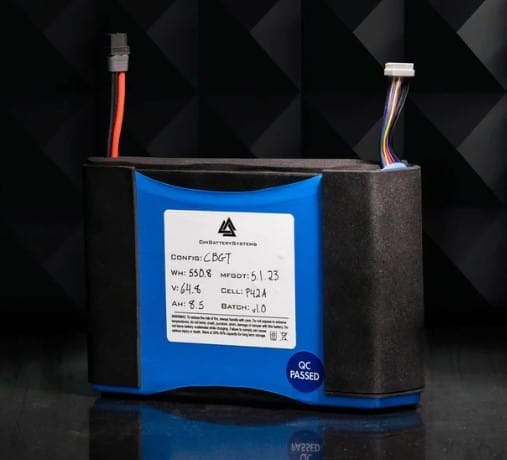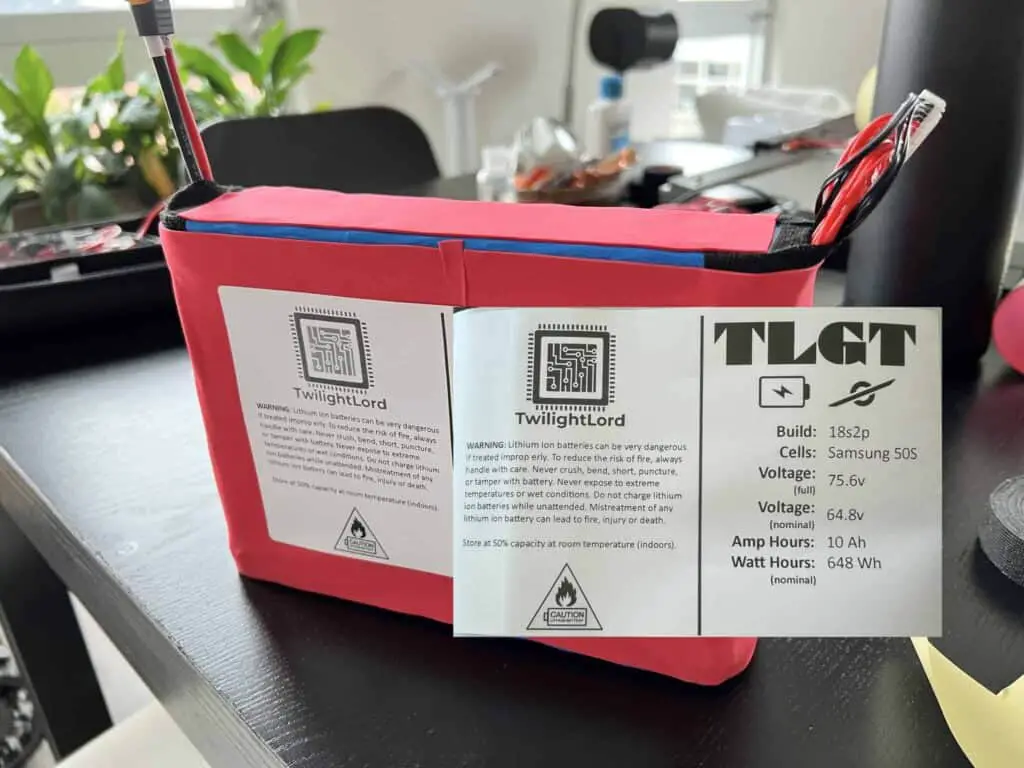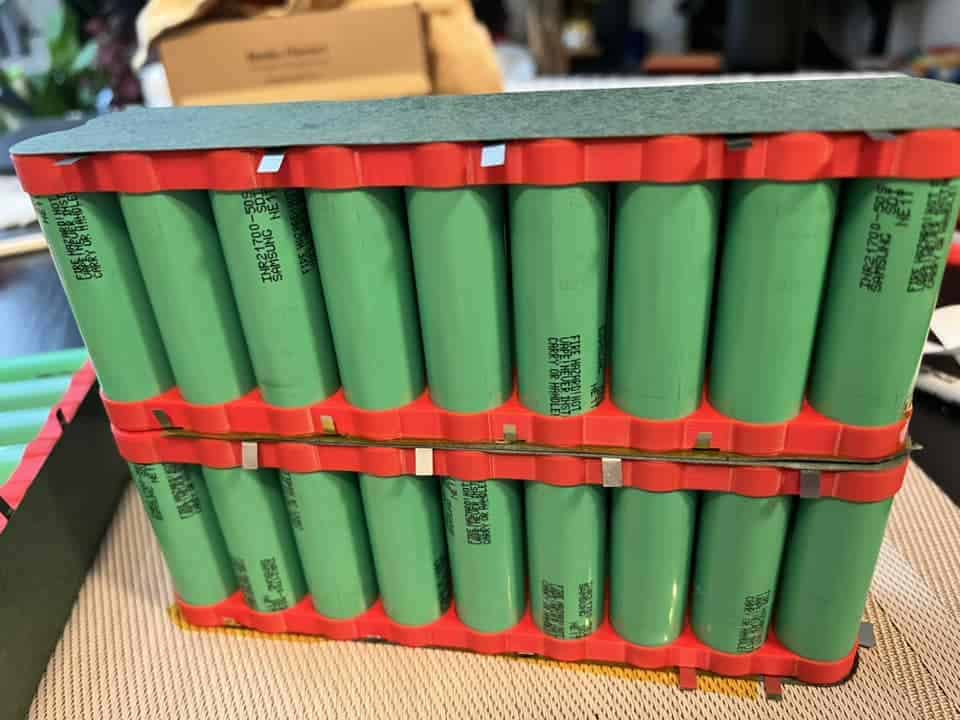Chi Battery Systems has a great reputation within the Onewheel community due to its iconic CBXR upgrade for the Onewheel XR. ChiBattery Systems has been a game-changer that’s transforming the Onewheel experience and redefining the boundaries of electric skateboarding but the gains they offer on their Onewheel GT battery aren’t for the same intentions as the CBXR battery.
The CBGT Onewheel Battery – Who Benefits?
The CBGT is not intended to provide massive gains in range like the XR battery replacement (CBXR). This battery is essentially really only a benefit for those Onewheel GT riders who have noticed a notable loss in their range capabilities from when they initially purchased their board. This could be attributed to not properly maintaining your battery or just having a high miler board.

The decision comes down to whether you want a little savings and do it yourself or not. The reason I say this is because Future Motion already provides a battery swap service for the GT at $600. This includes shipping the board both ways and having the board professionally installed by their team. If you go with a CBGT, you’ll be spending $450 and will have to install it yourself. Now ChiBatteries always puts out great tutorials on how to do the install. It should take about an hour of your time with a basic Onewheel GT toolkit.
Onewheel GT Battery Replacement Availability
If you had purchased your Onewheel GT within the first year then this battery will work for you. Boards with hardware and firmware 6407/6132 are not working as of yet and I advise you check Chibatteries website to see if they have updated their compatibility list.
There is really no increase in range if you do have a later Onewheel GT as many of the later Onewheel GTs already use P42A cell batteries which provides the same output as the CBGT. The original GT’s have Molicel P42A cells which will the CBGT does have about a 6% gain over.
Upgrade or Not to Upgrade to a CBGT
This battery will refresh your GT back to stock range values. You know that buying from a company that only specializes in batteries will mean you are equipped with a higher quality battery (cell level fusing, custom cell spacers, and a custom PCB). This does not mean its worth it however. If you are not tech savvy, I would not recommend doing the install yourself. Sending the board out to a Stoke Life Services tech will likely run you the same after all is done as the Onewheel GT battery replacement cost ($600).
It is more of a headache but you can then know that your Onewheel GT is the best available battery on the market. For the rider who wants to keep it easy, stay with a Future Motion replacement. Make sure you take off after market parts as many riders complain that Future Motion strips some items off the board and do not return it. Other than that however, it will be a smooth service.
CBGT Battery Info
| Watt Hours (Wh) | 550.8 Wh |
| Voltage (V) | 64.8V |
| Amp Hour (Ah) | 8.5Ah |
| Cell | 18 P42A |
What are P42A Cells?
The CBGT is equipped with 18 Molicel P42A is a lithium-ion batteries. These battery cells have a capacity of 4200mAh and a current capability of up to 45 amps. The nominal voltage of a P42A cell is 3.6V, and the maximum voltage is 4.2V. The P42A cell has a capacity of 4200mAh.
What is Cell Level Fusing?
“Cell level fusing” typically refers to the practice of integrating individual fuses at the level of individual cells within a battery pack. This approach is used in various battery systems within the PEV space.
The primary purpose of cell level fusing is to enhance safety and prevent catastrophic failures within a battery pack. Each cell in a battery can vary slightly in terms of capacity, internal resistance, and other factors. If one cell becomes faulty due to overcharging, overheating, or other reasons, it can lead to a phenomenon known as “thermal runaway,” where the faulty cell generates heat, potentially causing neighboring cells to fail as well. This can result in a fire or explosion.
What is a Custom PCB?
A custom PCB (Printed Circuit Board) refers to the circuit board in the CBGT that has been designed and manufactured for their battery. It is tailored to meet the requirements of the battery. This is going to be a higher quality over a standard battery.
Battery Alternatives for the GT
With the CBGT now in the aftermarket onewheel GT battery game, there are new comers as well. The TLGT Battery is an option for riders.
TLGT Battery For Onewheel GT
The TLGT (Twilight Lord GT) is a new 10ah battery pack (648 Wh) which is about 23% increase over the stock GT battery. This is a drop-in replacement for the GT battery (Samsung 50S in a 18s2p configuration).
This battery is custom designed with individual cell holders. The cells are not glued together, using the holders, cells are separated from each other by a small gap. Custom designed and laser cut pure nickel strips, 0.2mm thick vs 0.15mm used in stock pack. Serial groups are connected by big 36x36mm strips. Lower resistance translates to lesser voltage sag.
This battery does require ReWheel “Rescale State of Charge” patch set to 10000.

TLGT Battery for Onewheel GT
- Battery: 18s2p
- Cells: Samsung 50S
- Voltage: 75.6v (max) / 64.8v (nominal)
- Amp Hours: 10Ah
- Watt Hours: 648 Wh

This is exciting times for the Onewheel Space. More and more makers are entering the GT game which perhaps we may see as much aftermarket as we did for the XR. Keep in mind the XR had be the flagship board for over 3 years.
Onewheel GT Battery Q & A
This describes the configuration of the battery pack. It tells you the cells and how these are connected:
20s: The “20” in “20s” refers to the number of cells connected in series. When cells are connected in series, their voltages add up. So, if each individual cell has a voltage of, for example, 3.7 volts, then when you connect 20 of them in series, you get a total voltage of 74 volts (20 cells x 3.7 volts/cell).
2p: The “2” in “2p” refers to the number of cells connected in parallel. When cells are connected in parallel, their capacities add up, but the voltage remains the same. So, if each individual cell has a capacity of, say, 2000 milliampere-hours (mAh), then when you connect 2 of them in parallel, you get a total capacity of 4000mAh (2 cells x 2000mAh/cell).
So, “20s2p” means you have a battery pack with 20 cells connected in series to provide a higher voltage and 2 sets of those series-connected cells connected in parallel to increase the capacity.
When you see a notation like “50S” on lithium-ion battery packs, it typically refers to the number of cells connected in series. In this case, “50S” means that there are 50 individual cells connected in series within the battery pack.
Connecting cells in series increases the total voltage of the battery pack while keeping the capacity (in terms of ampere-hours or milliampere-hours) the same as that of a single cell. Each cell contributes its voltage to the total, so if each cell has a voltage of, for example, 3.7 volts, then a “50S” configuration would result in a total voltage of 50 cells x 3.7 volts/cell, which is 185 volts.
There are several tricks for longer lasting Onewheel batteries however the main thing to remember is storing your Onewheel. Always try to store your onewheel with around 50% battery in it. Leaving it fully depleted or charged can ruin the battery’s longevity.
This answer depends on how well you store your Onewheel. If you pampered the battery, you can expect great range out of that board for over 3 years time. If you are noticing a drop in range before then you should consider a battery swap. Battery lifetime will really depend on how good you are to that battery.
